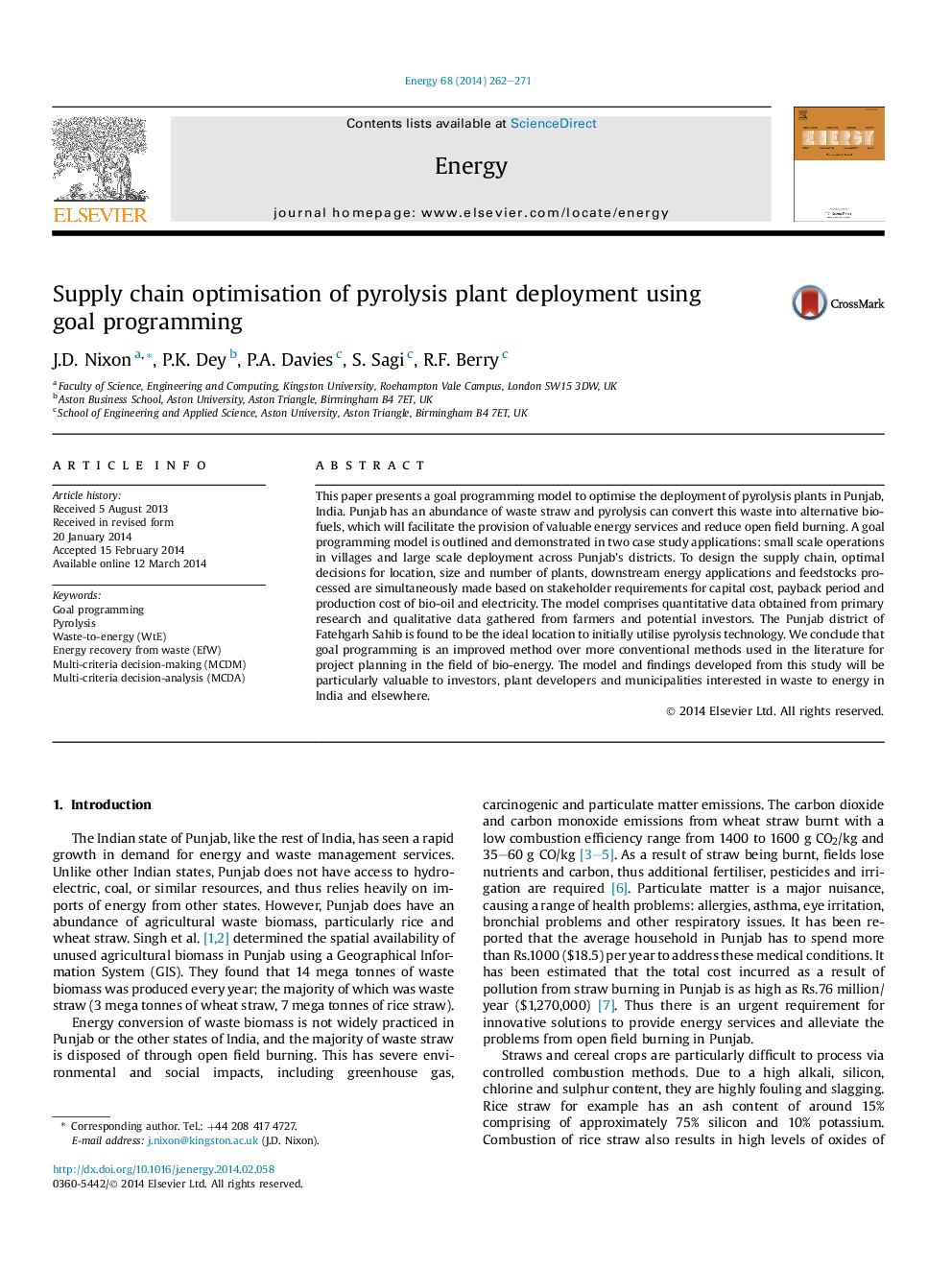| Article ID | Journal | Published Year | Pages | File Type |
|---|---|---|---|---|
| 8078016 | Energy | 2014 | 10 Pages |
Abstract
This paper presents a goal programming model to optimise the deployment of pyrolysis plants in Punjab, India. Punjab has an abundance of waste straw and pyrolysis can convert this waste into alternative bio-fuels, which will facilitate the provision of valuable energy services and reduce open field burning. A goal programming model is outlined and demonstrated in two case study applications: small scale operations in villages and large scale deployment across Punjab's districts. To design the supply chain, optimal decisions for location, size and number of plants, downstream energy applications and feedstocks processed are simultaneously made based on stakeholder requirements for capital cost, payback period and production cost of bio-oil and electricity. The model comprises quantitative data obtained from primary research and qualitative data gathered from farmers and potential investors. The Punjab district of Fatehgarh Sahib is found to be the ideal location to initially utilise pyrolysis technology. We conclude that goal programming is an improved method over more conventional methods used in the literature for project planning in the field of bio-energy. The model and findings developed from this study will be particularly valuable to investors, plant developers and municipalities interested in waste to energy in India and elsewhere.
Related Topics
Physical Sciences and Engineering
Energy
Energy (General)
Authors
J.D. Nixon, P.K. Dey, P.A. Davies, S. Sagi, R.F. Berry,
